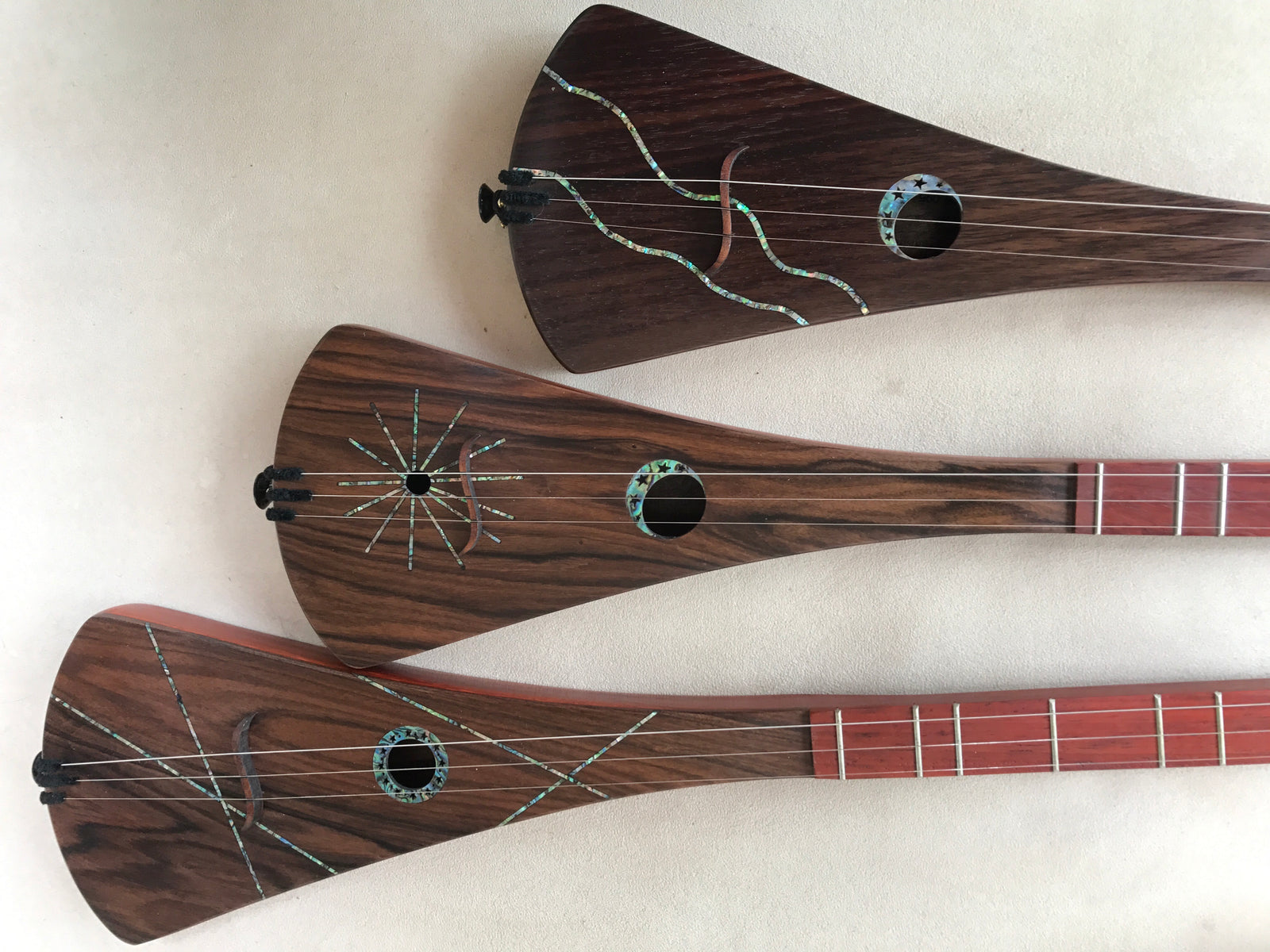Best Seller Strumstick
Products
Comes with an adjustable cord strap. Want a little more color? See our ColorUp Straps!
This is a special D model that is fretted to play in every key, not just one key. That means it has wrong notes, it has "sharps and flats", the fret pattern is like a guitar neck, This is called Chromatic fretting, The more common D-33 (No Wrong Notes) Strumstick uses a "Diatonic" fret pattern that just gives the notes for one key.
Advantages of the Chromatic D:
You can play in any key.
You can make many more different chords.
You can use a Capo to simply change keys using familiar chords
Disadvantages of the Chromatic D:
Lots of wrong notes
More complicated to learn
Has a higher potential for being frustrating.
The other characteristics are identical with the regular D-33.
The Chromatic D is for people who want the ability to play in any key and to have a wider range of chords and chord types, and are willing to deal with a longer learning curve and more difficulty learning, compared to the regular Strumsticks. The Chromatic gives up the "No Wrong Notes" and intuitive aspects of the D-33, in return for more musical possibilities. many Guitar players (guitar is already chromatic) still prefer the regular (diatonic) strumsticks, but sometimes people need to play in all keys. That is who the Chromatic D is for.


Sales, New Products, Instructions, Videos, and Free Offers, Useful Content.
